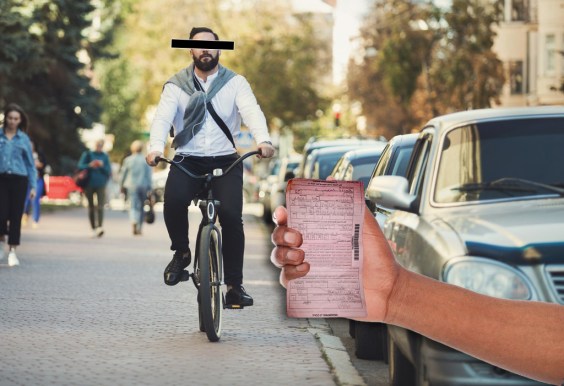
Rents continue to rise in cities across the U.S., and Pittsburgh is no exception. Noting the escalating housing costs in walkable neighborhoods, Alex Shewczyk at Bike Pittsburgh looks at how transportation and housing policy can coordinate to make places more affordable.
We know from resources like the Center for Neighborhood Technology's Housing+Transportation Index that transportation costs are a large household expense and closely tied to housing location. If you live somewhere with good options besides driving, you can save a lot. But these places are where housing costs are rising. To address the challenge of affordability, cities need to use both transportation strategies and housing strategies -- and there's a lot of overlap between the two, Shewczyk writes:
According to the Department of Housing and Urban Development’s Guidebook for Creating Connected Communities, typical households in auto-dependent neighborhoods spend about 25 percent of their income on transportation costs, but this number drops to 9 percent in neighborhoods that are more connected with a variety of mobility options.
Recently, the Obama Administration’s “toolkit” on housing development made local zoning and land-use regulations a national issue. The White House reports, “Significant barriers to new housing development can cause working families to be pushed out of the job markets with the best opportunities for them, or prevent them from moving to regions with higher -- paying jobs and stronger career tracks. Excessive barriers to housing development result in increasing drag on national economic growth and exacerbate income inequality.”
The White House toolkit calls for the elimination of off-street parking requirements. Development parking costs can range from $10,000 per surface parking space to $60,000 per structured space, expenses that are incorporated at the start of a project and can slow the development and limit its affordability. Those costs are then passed onto tenants and shoppers through higher costs on rent, products and services. While Pittsburgh offers up to a 30 percent car parking swap for bike parking (a great start), more aggressive parking swaps for bike parking could provide a huge opportunity to save on development costs. A bike corral in space that previously accommodated one motorized vehicle, can accommodate approximately a dozen non-motorized vehicles, increasing the overall parking capacity. “By reducing parking and designing more connected, walkable developments, cities can reduce pollution, traffic congestion and improve economic development. Businesses that can be accessed without a car can see increased revenue, increased use of alternative modes of transportation, and improved health outcomes for residents,” the White House report said.
The influx of younger people and empty nesters moving to Pittsburgh has resulted in an increase in demand for housing in desirable locations. “Between 2000 and 2014, units renting for less than $500 decreased from 50.1 percent of the housing inventory to 18.6 percent, while units renting for $1,000 or more increased from 4.8 percent to 28.9 percent,” according to the Pittsburgh Housing Needs Assessment. These statistics illustrate a market shift in Pittsburgh from from a large pool of affordable rental housing to one with a much greater offering of market rate and even luxury apartments.
As our most connected neighborhoods see higher housing costs, Pittsburgh’s underserved are being pushed to places with less frequent transit service that often lack sidewalks or a bike lane network. Our policies should ensure that it’s not only the well off that have access to quality transit and safe opportunities to bike and walk.
Affordable transportation and affordable development together form the foundation of an affordable Pittsburgh. One is not possible without the other. PolicyLink, in partnership with Public Allies, Urban Innovation 21 released the study, Equitable Development: The Path to an All-In Pittsburgh, which explains, “In the face of these trends, urgent action is needed to steer growth and change in a new direction: toward one, “all-in” Pittsburgh. The evidence is clear that the benefits of new growth and development will not automatically trickle down to poor and working-class residents. Local leaders must implement a targeted, intentional strategy to ensure all can thrive in the new Pittsburgh.”
Elsewhere on the Network today: Streets.mn makes the case that walkable development shouldn't just be reserved for major thoroughfares. And Rebuilding Place in the Urban Space says the Purple Line in DC's Maryland suburbs will provides additional value to the Metrorail system because it provides rare "crossrail" service between outlying areas.





